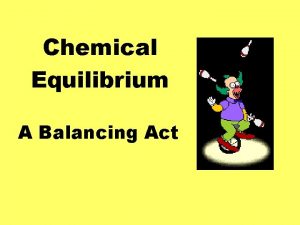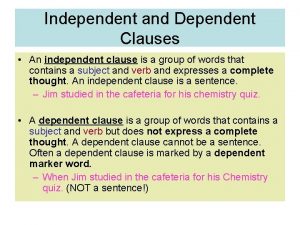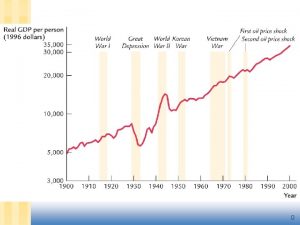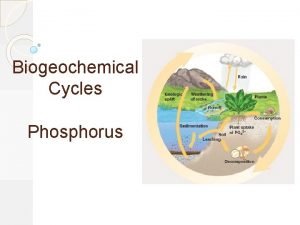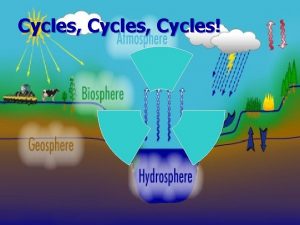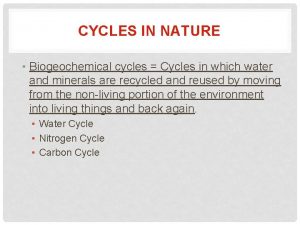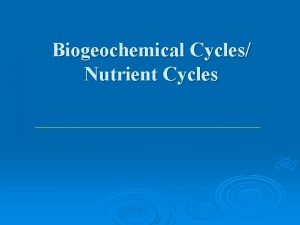Properties Processes Cycles Two independent properties define the







- Slides: 7

Properties, Processes & Cycles • Two independent properties define the state (i. e. condition) of a thermodynamic system. • The state of a system can change by interaction with its surroundings through work and heat transfer. • When this change occurs in a system, it is said that the system has undergone a process. • A thermodynamic cycle is a sequence of different processes that begins and ends at the same thermodynamic state. • Some sample processes: è Isothermal process: temperature is constant T = C è Isobaric process: pressure is constant, P = C è Isentropic process: entropy is constant, s = C è Ischoric/isometric process: Volume is constant, v=C è Adiabatic process: no heat transfer, Q=0 10 -3 -01

Example: Simple steam power plant cycle The properties at different states in a cycle are often shown on a T-v P-v or other property diagrams. Heat in Work out Property Diagram Isothermal & Isobaric Isometric/isochoric

Types of Processes I : Quasi-Equilibrium Process (YAC: 1 -7, 3 -4 & 3 -4) An idealized process that takes place so slowly that the properties of the system are in equilibrium. (Also called quasi-static processes) Example: A very slow expansion/compression of a gas in a piston cylinder, often called Moving Boundary Work. This type of work is very common in real systems. e. g. IC engine. For such a process, work done, W = P d. V. Work done in a quasi-equilibrium process, going from state 1 to 2 is given by: P = Area under the curve Hence work is path dependant or a path function v • Many real processes behave in such a manner. • A device producing work has maximum efficiency if operating via a quasi-equilibrium process. II: Steady Flow Process: 10 -3 -01

Properties: Internal Energy • E = U(internal energy)+KE(kinetic energy)+PE(potential energy) • Extensive property since it depends on the mass of the system, U = mu, where m is the mass of the system, u is the specific energy of the system (an intensive property like temperature and pressure) • Unlike KE & PE, the internal energy is a form of energy measured on a molecular scale. It can consist of different modes: translational kinetic energy of individual molecules, rotational energy and vibrational energies associated with molecules, and intermolecular forces between molecules. The sum of all these molecular-level energies is called the internal energy. • Internal energy is a property of the substance, thus, its change in value between two states is independent of the process. Process B 1 2 Process A 10 -3 -01

Properties: Enthalpy • H=U+PV, defined as total enthalpy • H=mh, h=u+Pv, specific enthalpy will be an intensive property • It is an important property in many situations, for example, the steady flow process, h = u+P/ is a measure of the combined internal energy and the pressure work • It is also useful when one considers phase transition: E. g. : when liquid water vaporizes, its internal energy changes from uf to ug. At the same time, its specific volume also changes from vf to vg, It goes through an expansion process; and it does work. • Therefore, the total change of the energy will be from hf = uf + pvf to hg. Their difference hfg=hg-hf is called the latent heat of vaporization at the given temperature/pressure. T hf hg Latent heat=hg-hf=hfg v

Properties: Specific Heats (3 -6 & 3 -7) • The state of a pure, compressible substance can be determined by values of two thermodynamic properties. Ex: P=P(v, T) • u = u(T, v): internal energy is a function of two variables T and v (or any other two independent properties such as P, h) • The internal energy can be varied by altering these two properties: • Define constant-volume specific heat Cv (can sometimes be considered as heat capacity, the ability of a substance to absorb or store energy). • Similarly, the enthalpy can be described by: • Define constant-pressure specific heat Cp

Specific Heats (cont. ) • Both Cp and Cv can be considered as heat capacities but under different processes • Their ratio k(specific heat ratio) k = Cp/Cv is also a property of the substance. • Special cases: incompressible fluid (density and v is a constant)


